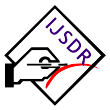Imp Links for Author
Imp Links for Reviewer
Research Area
Subscribe IJSDR
Visitor Counter
Copyright Infringement Claims
Indexing Partner
|
Published Paper Details
|
|
| Paper Title: | Carbon sequestration in plantation crops |
| Authors Name: | SUBRAMANIYAN P , Dr. L. Jeeva Jothi , Dr. N. Shoba , Dr. S. Murugesan |
| Unique Id: | IJSDR1705018 |
| Published In: | Volume 2 Issue 5, May-2017 |
| Abstract: | Carbon sequestration in Plantation Crops Subramaniyan, P., L. Jeeve Jothi, N. Shoba and S. Murugesan Dept. of Spices Plantation Crops HC & RI, Periyakulam, TNAU, Coimbatore. prsrapo@gmail.com Mob. No: 9003305495 Abstract One of the principal global concerns at the onset of the 21st century is the alarming increase in atmospheric carbon dioxide (CO2) concentrations. Several options of carbon sequestration being considered are geologic, oceanic, chemical transformations and terrestrial. Among these the transfer of atmospheric CO2 into biotic and pedologic carbon pools is called terrestrial carbon sequestration. It is a natural process with ancillary benefits besides cost-effectiveness. Plants fix atmospheric CO2 through photosynthesis and convert them as bio mass by storing them in various organs. Plantation crops are perennials that are grown in large scale and are mostly found in mixed species cropping systems. Such cropping systems offer a large amount of bio mass production per unit area than mono cropping system. Hence, they act as carbon pools and help in reducing the effect of global warming. Cocoa is an excellent crop in sequestering atmospheric carbon (35 t/ha by 15 year old plantation) and storing in various plant parts as well as in soil aggregates. Carbon capture and storage decreases with increase in plant density (Ofori-Frimpong et al., 2011). The sequestration potential of tea varies between clones and seedlings as well as age. It increases with age. Seedlings have potential of capturing more carbon than clones. The carbon content of the foliage and roots of seedlings was higher than of clonal plants (Kamau et al., 2008). The amount of carbon that rubber plantations sequester ranges from 135 to 153 t /ha out of which 39 – 69% is contributed by soil organic carbon pool. The bulk density of soil in top 15 cm was low when compared to 15-30 cm depth of soil and the Bulk density decreased with age. The total carbon sequestrated was higher in the top 0-15 cm soil layer and lower in 15-30 cm. Estimates of C in upper 40 cm of soil in mature plantations of coffee showed soil stock of 97.27and 95.78 Mg/C/ ha in shaded and open grown coffee systems. Plantation crops are perennials with large biomass production, and act as ‘natural Sponges’ for absorbing CO2 from atmosphere. Mostly grown in mixed cropping system, these crops form an excellent species in sequestering atmospheric carbon besides providing nutritional security and restoring soil fertility. With global carbon trading becoming reality, emitters unable to meet their own targets could pay of through carbon sequestration in plantations. |
| Keywords: | Keywords: Carbon sequestration- terrestrial sequestration – plantation crops- agro ecosystems. |
| Cite Article: | "Carbon sequestration in plantation crops", International Journal of Science & Engineering Development Research (www.ijsdr.org), ISSN:2455-2631, Vol.2, Issue 5, page no.95 - 101, May-2017, Available :http://www.ijsdr.org/papers/IJSDR1705018.pdf |
| Downloads: | 000337077 |
| Publication Details: | Published Paper ID: IJSDR1705018 Registration ID:170353 Published In: Volume 2 Issue 5, May-2017 DOI (Digital Object Identifier): Page No: 95 - 101 Publisher: IJSDR | www.ijsdr.org ISSN Number: 2455-2631 |
|
Click Here to Download This Article |
|
| Article Preview | |
|
|
|
Major Indexing from www.ijsdr.org
| Google Scholar | ResearcherID Thomson Reuters | Mendeley : reference manager | Academia.edu |
| arXiv.org : cornell university library | Research Gate | CiteSeerX | DOAJ : Directory of Open Access Journals |
| DRJI | Index Copernicus International | Scribd | DocStoc |
Track Paper
Important Links
Conference Proposal
ISSN
 |
 |
DOI (A digital object identifier)
  Providing A digital object identifier by DOI How to GET DOI and Hard Copy Related |
Open Access License Policy
Social Media
Indexing Partner |
|||
| Copyright © 2024 - All Rights Reserved - IJSDR | |||






Facebook Twitter Instagram LinkedIn